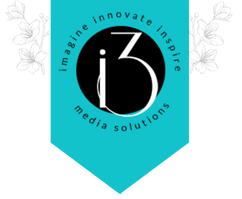Your website can't just sit there– it needs to be updated to perform its best!…
Top 7 Web Design Mistakes That Can Hurt Your SEO
Website design and navigability are crucial to your business’ digital marketing strategy, but did you know that some design choices could negatively impact other aspects of marketing? One of the common places that design choices could severely hurt your other digital marketing efforts is with SEO– Search Engine Optimization. Certain practices, some of which are common, can actually harm your SEO efforts in the process. Here’s our list of the top design mistakes we’ve seen that can negatively impact your SEO:
– Overusing large images and media files. Large files such as these can drastically increase website loading time, meaning precious time that the viewer is involuntarily requested to sit and wait to see what they’ve been linked to. Every second can be precious, as longer times bring the threat that they’ll leave before it fully loads. This is also an issue for search engines, which take page loading time into consideration, and will penalize you for slower than average rates.
– Allowing pop-up ads. Search engines use many aspects in order to rank websites, but one of those not often thought of is how the user experiences your site. That’s right– if there are parts of your website that search engines think your viewers won’t appreciate, you may get judged negatively for that. One of the common mistakes is allowing pop-up ads, especially on mobile sites, where they’re hard to navigate away from.
– While we’re on the subject, not having a mobile-friendly site is another big issue that search engines may punish you for. Mobile searching is more and more common recently, and with the increasing awareness of this, search engines have begun to adjust rankings based on if your site can handle phones and tablets well.
– Hiding your text in images. While viewers may have no problem reading the text you place on your site as a part of images, the bots that search engines will check your site with won’t be able to read it at all. If your titles, testimonials, or contact information is hidden from these bots in an image, when it comes to search engines, these text pieces may as well not even exist. Ensure you’re including text as a separate part of the page as well as within images if you see the need to do so.
– Related but also so important to drive home, is that designs with sparse content may severely hurt you. Search engines absolutely love creative, original content, and if you’re not showcasing enough of it, that will come right back to hurt you. No matter how beautiful a site without many text blocks may appear, it’s this lack of content that can be a real issue. Including at the very least, an about page and a page describing your services is highly recommended.
– While you might not be hiding your text in images, if your titles aren’t labeled with the right HTML, then they’re not doing their best! Use header tags for your titles to give search engine bots an easy way to find what your website pages are about, and they’ll reward you!
– Last but not least, ensure you use descriptive names for your URLs and images! File names with random numbers and letters, or generic default titles are incredibly common– but taking a few extra seconds to give them meaningful names can do a lot to help you! These names can be read by search engines, meaning they know what the purpose of your media is, leading to a boost in regards to your content on their terms. The more relatable, original content you have, the better, especially if they can tell!
Contact i3 today to check out how your website may be affecting your SEO– and to test out your digital marketing performance!


